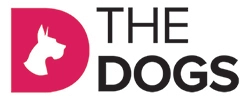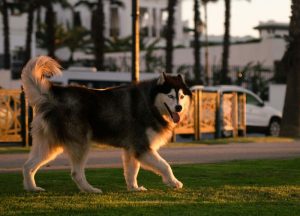Whether you have a cat, dog, bunny, or any other pet, they all add great joy and companionship to our lives and taking care of their needs, such as proper collars, leashes and food is important. For example, the leash that you pick for your dog must be appropriate so that walks are both fun and safe, just like providing high quality cat food is key to a cat’s health. Knowing the different types of dog lead qualities makes it easier for you to choose what works best for your dog.
What is The #1 Trick to Stop Your Dog From Pulling on the Leash?
Through constant reward-based training, you can nip your dogs’ pulling behaviour in the bud. Be sure to give your dog treats, praises and playtime when they walk with you, and importantly, ensure the leash is slack. Positive reinforcement will help calm walking and become more attractive than pulling.
What is The Stop-and-Go Dog Training Method?
With the stop-and-go method, every time your dog yanks the leash, immediately stop moving and walk only when the leash is loose. This helps the dog understand that pulling the leash means you stop and if they want to move forward, the leash must be slack. Being consistent is crucial, so make sure all family members use the same approach to training so all behavioural problems are managed effectively.
What Type of Dog Lead is Best?
As with anything regarding your pet, the selection of the correct dog lead depends on your furbaby’s size, its behaviour, and how you intend to spend time with it. Here are some common types of dog leads and their benefits:
Hands-Free Leash
The leash is worn around the waist and is useful for joggers and people who want a more convenient way of walking their dogs. Hands-free leashes feature adjustable lengths with shock-absorbing components.
Retractable Leashes
These leashes give the dog additional freedom to explore within a specified area, thanks to the leash extension mechanism. Responsible use is a must in heavily populated areas to avoid lessened control, tangling, and other hazards.
Standard Flat Leashes
Constructed out of nylon or leather, they are between 4 and 6 feet long, these are ideal for daily walks in the city or suburbs due to their added control and durability.
Long-Line Leashes
Long-line leashes are longer than the usual retractable leashes and allow greater freedom of movement. In larger spaces, you can still keep your dog under control making them perfect for training sessions that focus on teaching recall.
Chain Leashes
Chain leashes are made of metal chains. They are more durable and will last longer than other types of materials and works well for dogs that may chew their leashes. However, these might not be suited for every dog as they are heavier and uncomfortable to use.
What Leash is Best For a Dog That Pulls?
Controlling a pulling dog can be challenging, so the leash must provide control while putting the least amount of strain on the handler and dog. Here are some options that will work:
No-Pull Harness With a Front Clip
This design of harness works to aid in reducing pulling by shifting the dog’s energy in the opposite direction. The dog’s attempt to pull is then redirected towards the handler.
Martingale Leashes
These leashes serve a dual purpose as a collar that also functions as a leash and it tightens around the dog’s neck gently to provide a correction without strangulation when the dog pulls.
Double-Handle Leashes
The additional handle located close to your dog’s collar on the leash provides more control over your dog when it requires added restraint, like in a crowd or while crossing the road.






